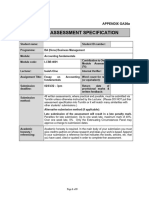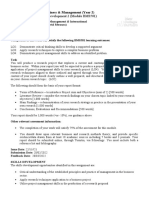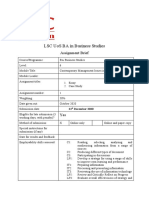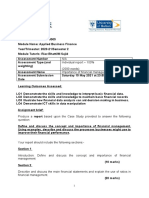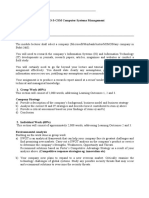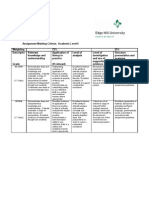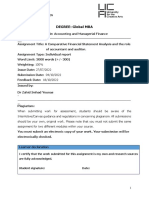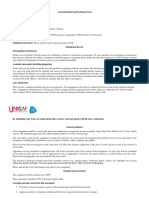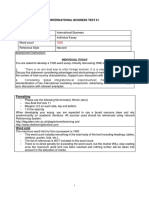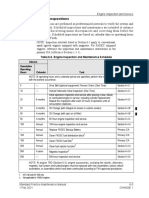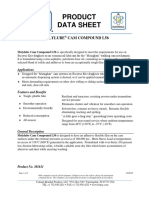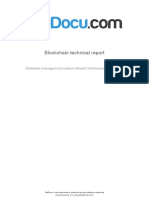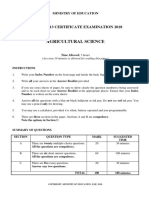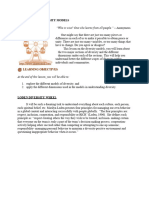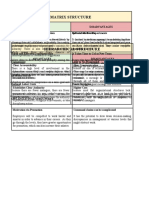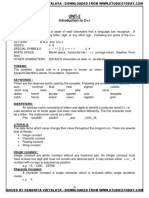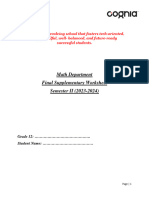0% found this document useful (0 votes)
26 views11 pagesFinancial Assignment For March 2023
This document provides an assignment brief for a Level 5 module titled "Accounting for Business" at LSC University of Southern England. Students are asked to write a 1,000 word essay discussing six accounting concepts used in the preparation of financial statements and to illustrate the application of these concepts with examples. The assignment is worth 30% of the module grade and is due on May 19th, 2023. It will be assessed based on the student's research, knowledge of accounting concepts, analysis, practical application, and writing skills. Feedback and marks will be provided according to the assessment criteria outlined.
Uploaded by
Consuela MunteanuCopyright
© © All Rights Reserved
We take content rights seriously. If you suspect this is your content, claim it here.
Available Formats
Download as DOCX, PDF, TXT or read online on Scribd
0% found this document useful (0 votes)
26 views11 pagesFinancial Assignment For March 2023
This document provides an assignment brief for a Level 5 module titled "Accounting for Business" at LSC University of Southern England. Students are asked to write a 1,000 word essay discussing six accounting concepts used in the preparation of financial statements and to illustrate the application of these concepts with examples. The assignment is worth 30% of the module grade and is due on May 19th, 2023. It will be assessed based on the student's research, knowledge of accounting concepts, analysis, practical application, and writing skills. Feedback and marks will be provided according to the assessment criteria outlined.
Uploaded by
Consuela MunteanuCopyright
© © All Rights Reserved
We take content rights seriously. If you suspect this is your content, claim it here.
Available Formats
Download as DOCX, PDF, TXT or read online on Scribd
/ 11







